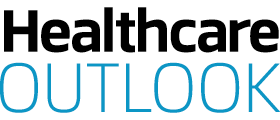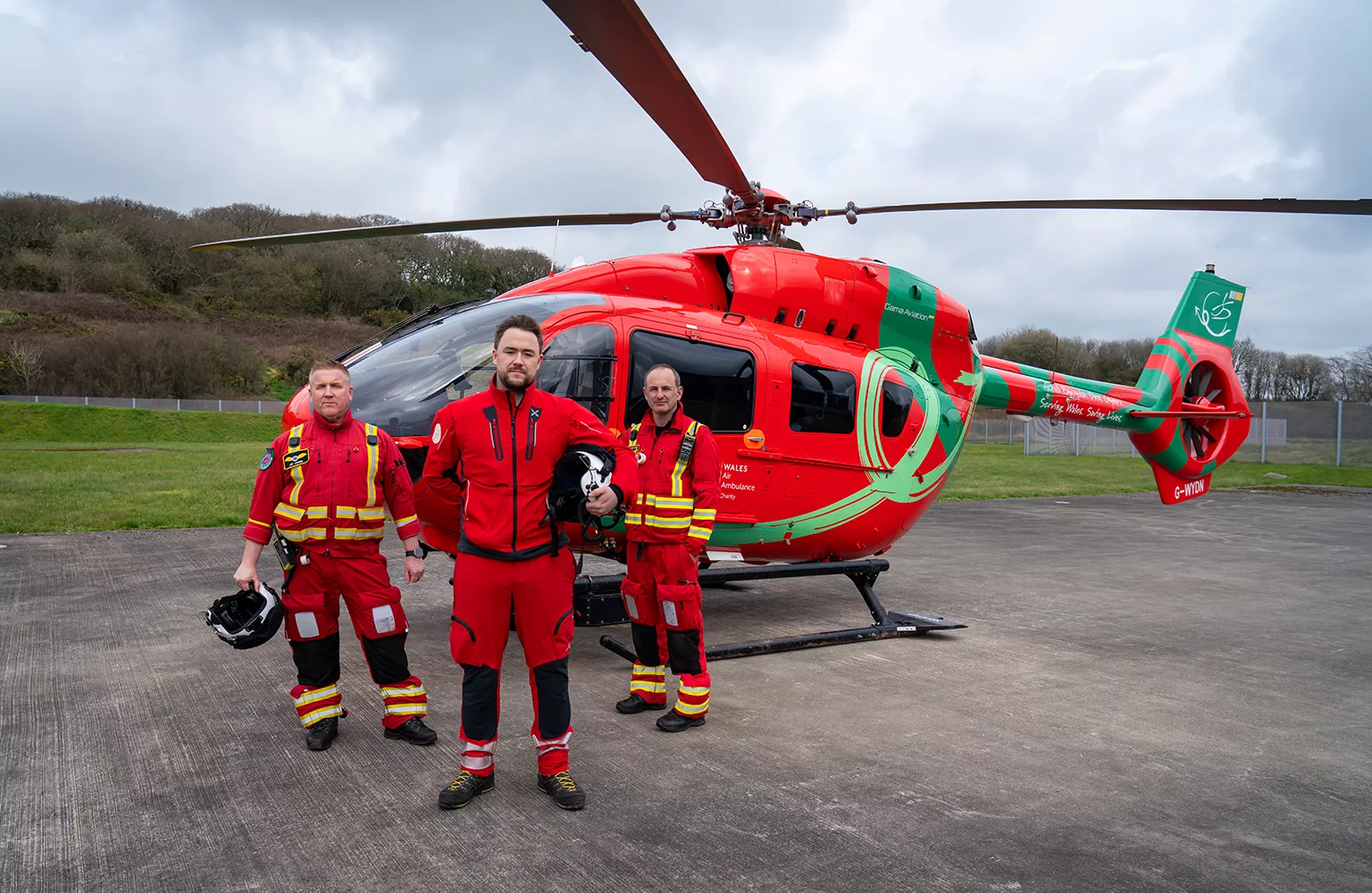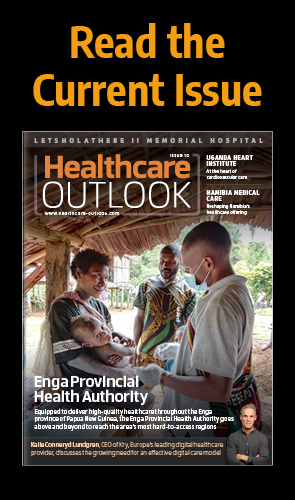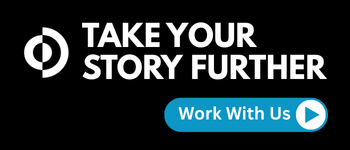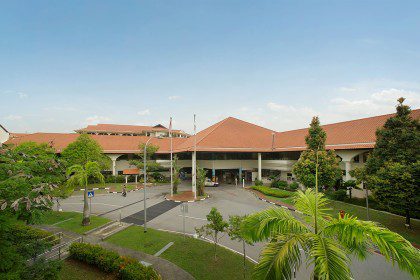Dr Sue Barnes, Chief Executive of the Wales Air Ambulance Charity, discusses the organisation’s leading status in advanced, time-critical care for the Welsh population and its focus on continuous improvement through evidence-based decision making.
SERVING WALES, SAVING LIVES
In recent years across the UK, unprecedented pressures on primary care, an ageing population, and the legacy of the COVID-19 pandemic have converged to form a perfect storm for key healthcare services across much of the country.
“This is a challenging time for a healthcare system on which an entire population depends,” opens Dr Sue Barnes, Chief Executive of the Wales Air Ambulance Charity (WAA).
Wales’ demographic profile, which is comparatively more elderly and economically disadvantaged than other parts of the UK, faces its own unique difficulties, and rural communities are often challenged by their geographic isolation in terms of accessing healthcare.
“That being said, with regard to helicopter emergency medical services (HEMS) provision, WAA is amongst the best in the world,” Barnes points out.
As the only air ambulance charity based in and dedicated to the people of Wales, WAA relies entirely on donations to raise the £11.2 million required each year to keep its helicopters in the air and vehicles on the road.
The charity’s mission is to deliver lifesaving, advanced medical care to people across the nation, whenever and wherever they need it. Its vision is to improve the lives of patients and their families by being a world leader in advanced, time-critical care.
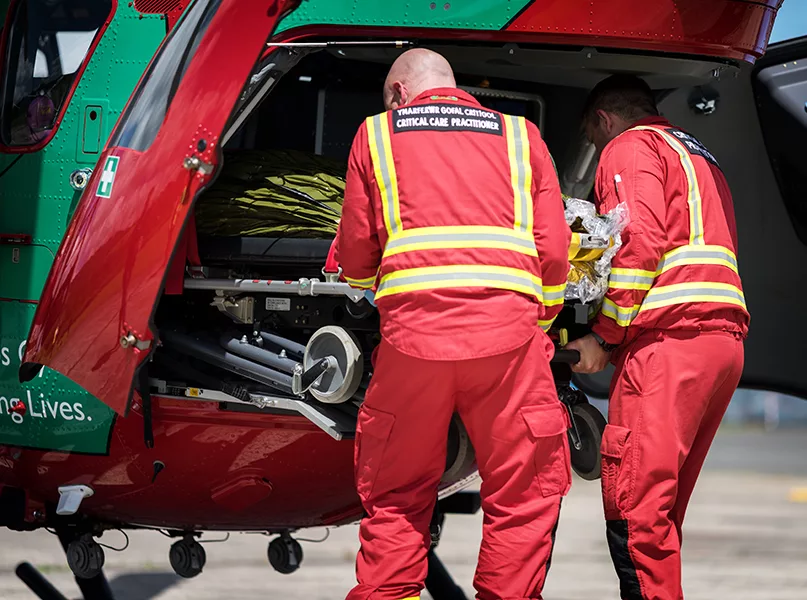
A WELL-OILED MACHINE
Launched on St David’s Day in 2001, WAA delivers lifesaving, round-the-clock medical care across Wales.
“We are on standby to attend those suffering life or limb-threatening injuries or illnesses with some of the most advanced air ambulances and rapid response vehicles in the UK at our disposal,” Barnes reveals.
With its services delivered via an exclusive partnership with NHS Wales, WAA raises the funds to maintain operation of its vehicles, whilst the Emergency Medical Retrieval and Transfer Service (EMRTS) supplies the highly skilled NHS consultants and critical care practitioners who work onboard.
In addition, Gama Aviation provides the charity its aviation service – employing pilots and engineers and maintaining a fleet of four primary H-145 helicopters as well as a back up service.
Of those aircraft, three are directly leased to the charity from Milestone Aviation. During a time of global uncertainty, it was felt that directly leasing several aircraft would offer additional resilience and protect its lifesaving service.
Established bases across Wales, including those in Caernarfon, Welshpool, Cardiff, and Llanelli, allow WAA’s highly skilled crew to carry out medical procedures that would usually only be available within a hospital setting.
“We deliver blood transfusions, administer anaesthesia, intubate patients to protect their airways and take control of their respiration to oxygenate appropriately and, in extreme situations, will undertake emergency operations at the scene of an incident,” she informs.
For the patient, this can mean hours saved in receiving the appropriate treatment when compared to standard care.
As a valuable but scarce resource offering a specialised service, WAA serves the entire Welsh nation and attends the highest level emergency calls. These calls are received by the Welsh Ambulance Services University Trust clinical contact centre and monitored by the EMRTS Critical Care Hub, which dispatches the service if required.
“Our service does not replace the Welsh Ambulance Service; we work in partnership with them,” Barnes clarifies.
In the chain of emergency care, the Welsh Ambulance Service’s medics typically offer initial immediate care, whilst WAA is the next link in the chain, delivering advanced, hospital-standard treatments at the scene.
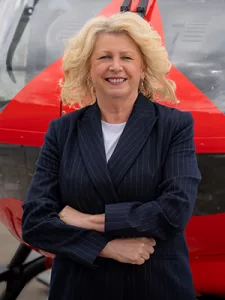
“We are on standby to attend those suffering life or limb-threatening injuries or illnesses with some of the most advanced air ambulances and rapid response vehicles in the UK at our disposal”
Dr Sue Barnes, Chief Executive, Wales Air Ambulance Charity
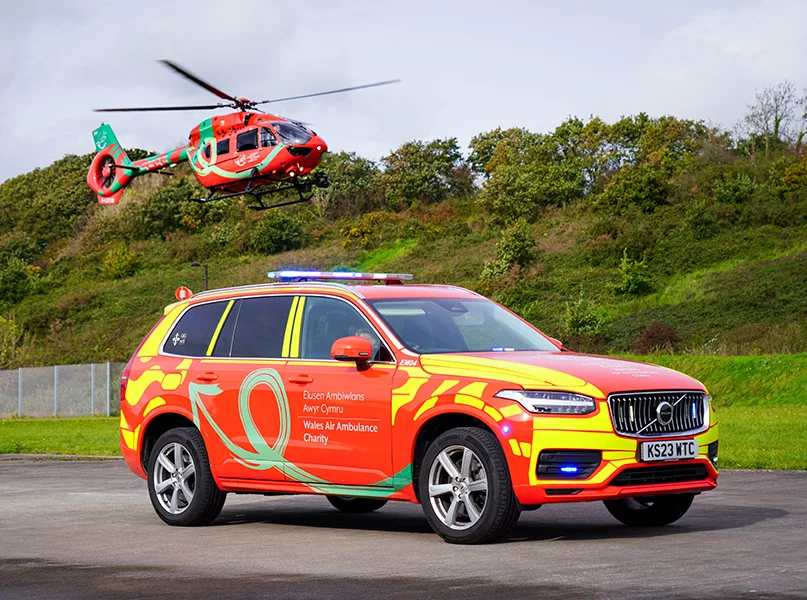
A POWERFUL PARTNERSHIP
In 2015, WAA transitioned its service into a partnership with NHS Wales through the creation of EMRTS. This has resulted in the consultant-led air ambulance service that is now delivered across Wales.
“This unique and exclusive partnership between WAA and NHS Wales is truly greater than the sum of its parts. Neither organisation could deliver such advanced, world-leading services on its own,” Barnes affirms.
To demonstrate the value of the new consultant-led service, a five-year evaluation took place between 2015 and 2020 which was independently scrutinised by Swansea University. It made use of the SAIL Databank based at the university – the single largest anonymised data set of patient records in the world.
Amongst its key findings, the evaluation identified a 37 percent reduction in mortality after 30 days when critically ill patients suffering blunt trauma injuries are attended to by EMRTS. This improved survival rate compares to a standard ambulance response and local hospital treatment.
The study also identified an increase in access to timely emergency treatment for patients across Wales, an influx of national consultant recruitment, tangible development of critical and emergency care knowledge amongst NHS Wales employees, and a general relief of pressure on frontline services.
Similarly, the same research verified WAA’s ability to administer hospital-grade critical care interventions, such as blood transfusions, general anaesthesia, and advanced pain relief, in 66 percent of missions, which otherwise would have been delayed until transfer to hospital.
“It was this conclusive proof of our impact that inspired us to go even further in ensuring that our services could be accessed by the maximum number of patients as equitably as possible,” Barnes enthuses.
As such, WAA and NHS Wales were presented with the Social Impact Award by the Institute for Collaborative Working (ICW) at the House of Lords in 2019. The accolade recognised the effective partnership between the two organisations and commended their constant evaluation and evidence-based decision making.
Ultimately, this passion for continuous improvement to benefit the Welsh population is what led WAA to review its services and reconfigure its physical and operational footprint as a result.
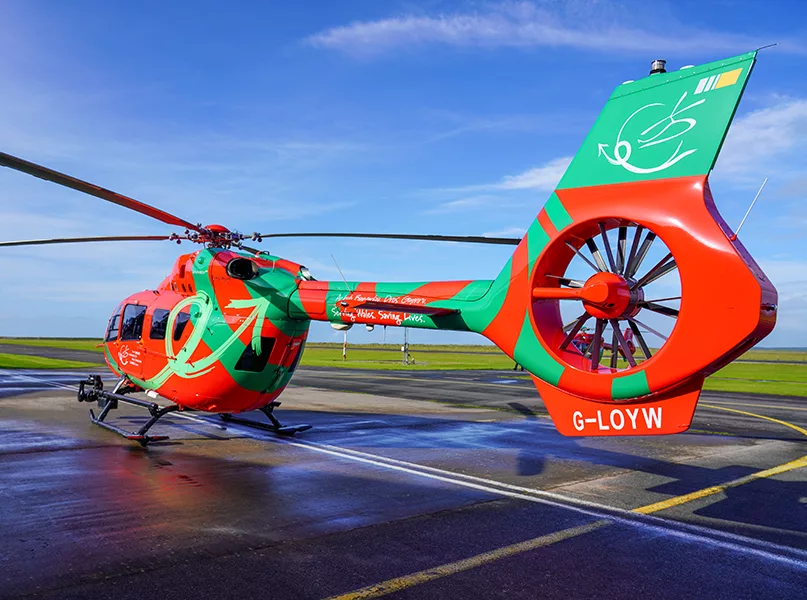
SERVING A NATION
In June 2024, WAA reached a significant milestone, having attended its 50,000th mission since its inception. This achievement is testament to the charity’s dedication, highly trained staff, dedicated fleet, and ability to serve the entire Welsh nation.
The charity believes that it is in the best interests of Wales to have an air ambulance operation that works in medical partnership with the NHS but is independent in its income generation and decision-making. This independence, outside of the pressures and constraints of public sector funding, allows the charity to focus on its core services, continually monitor and effectively adapt to the critical care needs of Wales in a timely manner, and maintain a consistently high standard of care.
Through its relationship with NHS Wales, WAA works with, and across, seven health board regions and with the Welsh Ambulance Service. Aligned with this is the political landscape relating to health.
“Politically, health is devolved so is run by the Welsh government and not the UK government in Westminster,” Barnes explains.
As such, understanding the national picture is of utmost importance for WAA, as is the consideration of equity across the entire country.
Despite the various potential challenges faced when providing a national service, the charity’s strength lies in its ability to traverse the country at speed, with its H-145 aircraft able to travel from north to south in less than an hour.
“In this way, we have created a resilient national service which can see crews matched to patient needs and multiple aircraft activated in the event of a major incident,” she details.
In addition, WAA’s robust partnership with NHS Wales has contributed to excellence across the organisation as it works closely with the Welsh Ambulance Service control room and 999 call handlers.
“Not only does this give our clinicians the unique opportunity to advise or intervene during a 999 call, but also gives us a detailed pan-Wales data set to assess the effectiveness of and demand for our service,” Barnes clarifies.
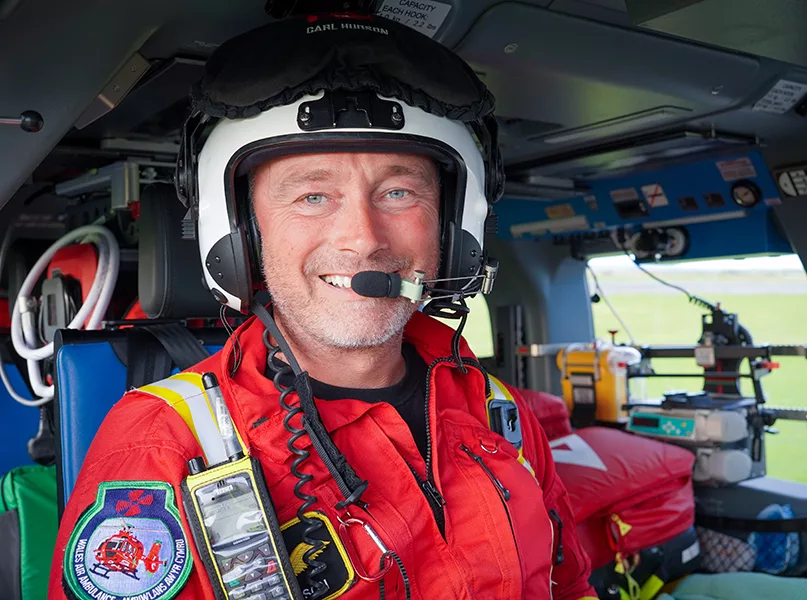
EVIDENCE-BASED DECISION MAKING
To maintain its status as a world-leader in advanced, time-critical care, WAA has assumed an evidence-based approach to continuous improvement.
“Our vision is underpinned by our continuous service evaluation and focus on evidence-based decision making,” Barnes emphasises.
The recent five-year service evaluation proved that the charity’s work is saving lives and improving chances of long-term recovery for patients across Wales.
To supplement this, several years of detailed analysis and two separate studies into WAA’s current service configuration have since been undertaken, the former conducted by EMRTS and the latter independently led by the Chief Ambulance Services Commissioner for Wales.
The analysis revealed potential areas for improvement, such as teams being underused in Welshpool and Caernarfon, northern parts of Wales not having access to an overnight air ambulance service, and two to three patients per day on average not being reached across Wales.
As such, the commissioner made recommendations for improvement, which WAA and NHS Wales both agreed upon. These included the Caernarfon and Welshpool bases coming together in one unified location in the heart of North Wales and two response teams operating from this new base.
“By utilising the same resources but changing the way they operate, we hope to address disparities in our service and save more lives,” Barnes confirms.
By implementing these changes, it is hoped that WAA will be able to attend more patients, provide northern parts of Wales with an accessible overnight service, and make better use of its resources and generous public donations.
WAA believes that the two separate studies underpinning these changes are amongst the most in-depth of any HEMS in the world, informed by past mission and patient data, weather patterns, and the use of Optima external modelling which allowed for the accurate analysis of around 200 different service configuration options.
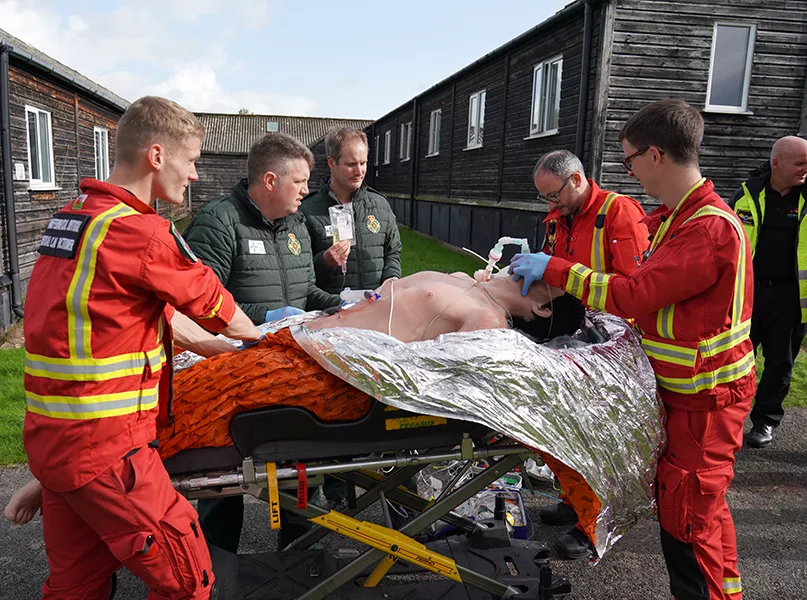
OPTIMISING OPERATIONAL DATA
Since the earliest days of its collaboration with EMRTS, WAA has benefitted from excellent operational data, largely due to the two organisations’ shared commitment to evidence-based improvement.
This data has led to important discoveries and has underpinned the continuous improvement of the service since 2015 which culminated in the business case for moving to a 24/7 operation in 2020.
However, due to increasing operational complexities encountered by air ambulance services, the charity identified a requirement for additional detail in its data and new ways of predicting how any changes might impact on the service offered to patients.
“To bolster our insight further and enhance operational efficiencies, we sought improvements to how we use our data,” Barnes informs.
“At one level it was easy to use our data analysis to show current performances and shortcomings, but we could not easily model and forecast the impact of any changes,” she elaborates.
Whilst WAA knew that conventional road ambulance services had developed algorithm-based models to do this sort of forecasting – simulating a live operational environment to test locations and shift patterns – these models would have to be significantly adapted to cope with the complexity and variability of an air ambulance operation.
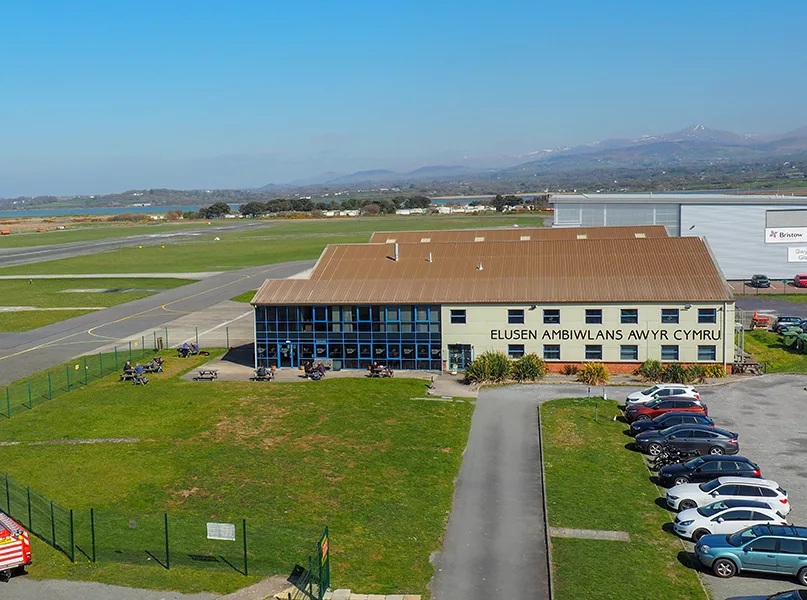
As such, EMRTS commissioned Optima to create a similar model for its air ambulance service that also utilised detailed historical data and incorporated additional elements such as weather patterns, traffic and road modelling, and circumstances specific to its location.
“EMRTS worked with Optima to create an initial draft model. This was first tested on multiple historical scenarios to ensure it performed accurately when compared with real-life circumstances.”
Eventually, the Optima data model utilised hundreds of different scenarios to generate a list of potential improvements that would significantly enhance WAA’s service levels.
These included introducing a day shift into WAA’s Cardiff operations to reduce unmet need in the area, and the combination of the Caernarfon and Welshpool bases as identified by the commissioner, due to be actioned in 2026.
“Both NHS Wales and WAA are now satisfied that the changes proposed will save a significant number of lives,” Barnes surmises.
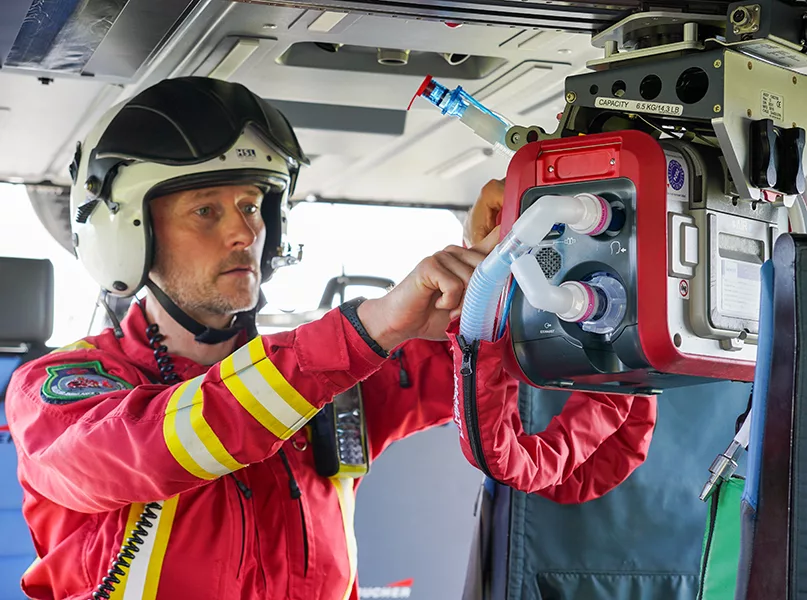
ONWARDS AND UPWARDS
As a charitable organisation, WAA depends entirely on public funding. Going forward, to account for a 30 percent rise in its operating costs from £8.5 million to £11.2 million this year, the charity plans to undertake significant fundraising drives.
In addition, as an evidence-based service committed to constantly evaluating its initiatives, WAA is always looking to improve the medical aspects of its output.
“One of the reasons that I really love my job is that I am surrounded by people who want to make a difference, keep pushing the boundaries, and find out where we can improve patient benefits,” Barnes explains.
As such, EMRTS is involved in a number of projects to extend the medical scope of its services, such as the early identification of patients who may benefit from critical care transfers for thrombectomy procedures.
WAA also seeks to ensure that base moves and changes to staff operating hours in response to evidence-based recommendations are undertaken with the utmost care, so they continue to exceed current standards and avoid disruptions to ongoing service delivery.
“We are also interested in the use of artificial intelligence (AI) in terms of swiftly identifying patients who might be candidates for our service,” she reveals.
Currently, WAA sees less than one percent of emergency calls that currently come into the Welsh Ambulance Service control room and they are managed by human interrogation.
It is hoped that, eventually, the use of AI will be able to rapidly ascertain which patients are likely to be suffering from time-critical life of limb-threatening conditions and could therefore benefit from WAA’s services, which are underpinned by deep-rooted values.
“Of our values, the attribute that comes up time and time again is passion. That is the major characteristic that spans our employees, crews, volunteers, and supporters,” Barnes concludes.
